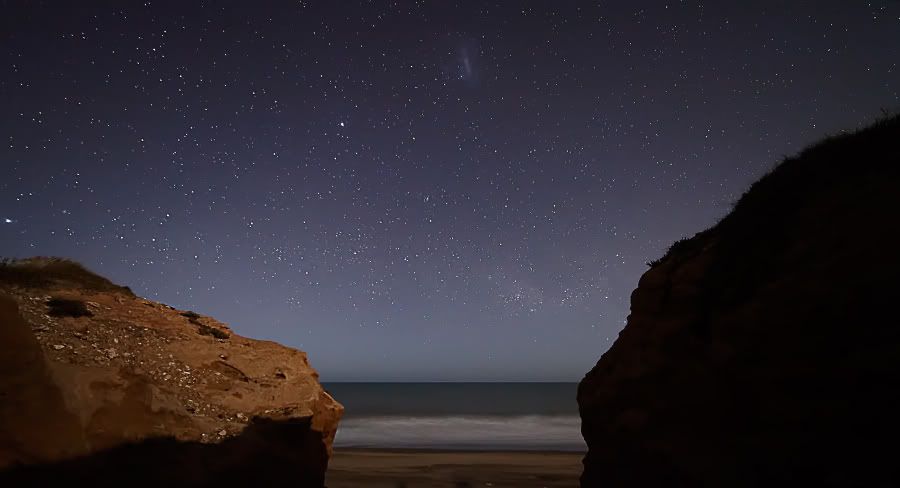Sandstone wrote:Question for those APOD followers from the southern hemisphere:
I've never been down that far south, and have often wondered just what the Magellenic clouds look like to the unaided eye. I've seen photos, of course, but can anyone describe what it's like to actually look up and see them?
Thanks,
Sandstone
I live at 35 degrees south so the Magellan Clouds are a familiar sight.
From the city both clouds are washed out in sky glow, we can see the Orion Nebula, the Pleiades and a hint of Omega Centauri but no Milky Way or Magellan Clouds.
From a rural place the clouds look like two small fuzzy clouds in the sky, two distictive patches of fog in the middle of the dark sky. Both clouds are easy to recognize, the Large Magellan cloud is thin and large, the Small Magellan Cloud is like a small oval and is just next to 47 tucanae that can be seen as a fuzzy star with the naked eye.
From a very dark location far away from any lights the clouds are bright, the Tarantula Nebula can be seen as a small patch of light just next to the Large Magellan Cloud and the different structure of both clouds can be seen with the naked eye.
I've tried to make a photo that will look exactly as what you can see with the naked eye, it's really difficult as the camera and human eyes are totally different things, here's one of my results:

The LMC seen from the cliffs. This matches in some way what I could see with my eyes in both brightness and size. There was a 50% moon towards the right. Without the moon the view is better but this is a good average I think.
[quote="Sandstone"]Question for those APOD followers from the southern hemisphere:
I've never been down that far south, and have often wondered just what the Magellenic clouds look like to the unaided eye. I've seen photos, of course, but can anyone describe what it's like to actually look up and see them?
Thanks,
Sandstone[/quote]
I live at 35 degrees south so the Magellan Clouds are a familiar sight.
From the city both clouds are washed out in sky glow, we can see the Orion Nebula, the Pleiades and a hint of Omega Centauri but no Milky Way or Magellan Clouds.
From a rural place the clouds look like two small fuzzy clouds in the sky, two distictive patches of fog in the middle of the dark sky. Both clouds are easy to recognize, the Large Magellan cloud is thin and large, the Small Magellan Cloud is like a small oval and is just next to 47 tucanae that can be seen as a fuzzy star with the naked eye.
From a very dark location far away from any lights the clouds are bright, the Tarantula Nebula can be seen as a small patch of light just next to the Large Magellan Cloud and the different structure of both clouds can be seen with the naked eye.
I've tried to make a photo that will look exactly as what you can see with the naked eye, it's really difficult as the camera and human eyes are totally different things, here's one of my results:
[img]http://i126.photobucket.com/albums/p84/lrargerich/IMG_5605_900.jpg[/img]
The LMC seen from the cliffs. This matches in some way what I could see with my eyes in both brightness and size. There was a 50% moon towards the right. Without the moon the view is better but this is a good average I think.